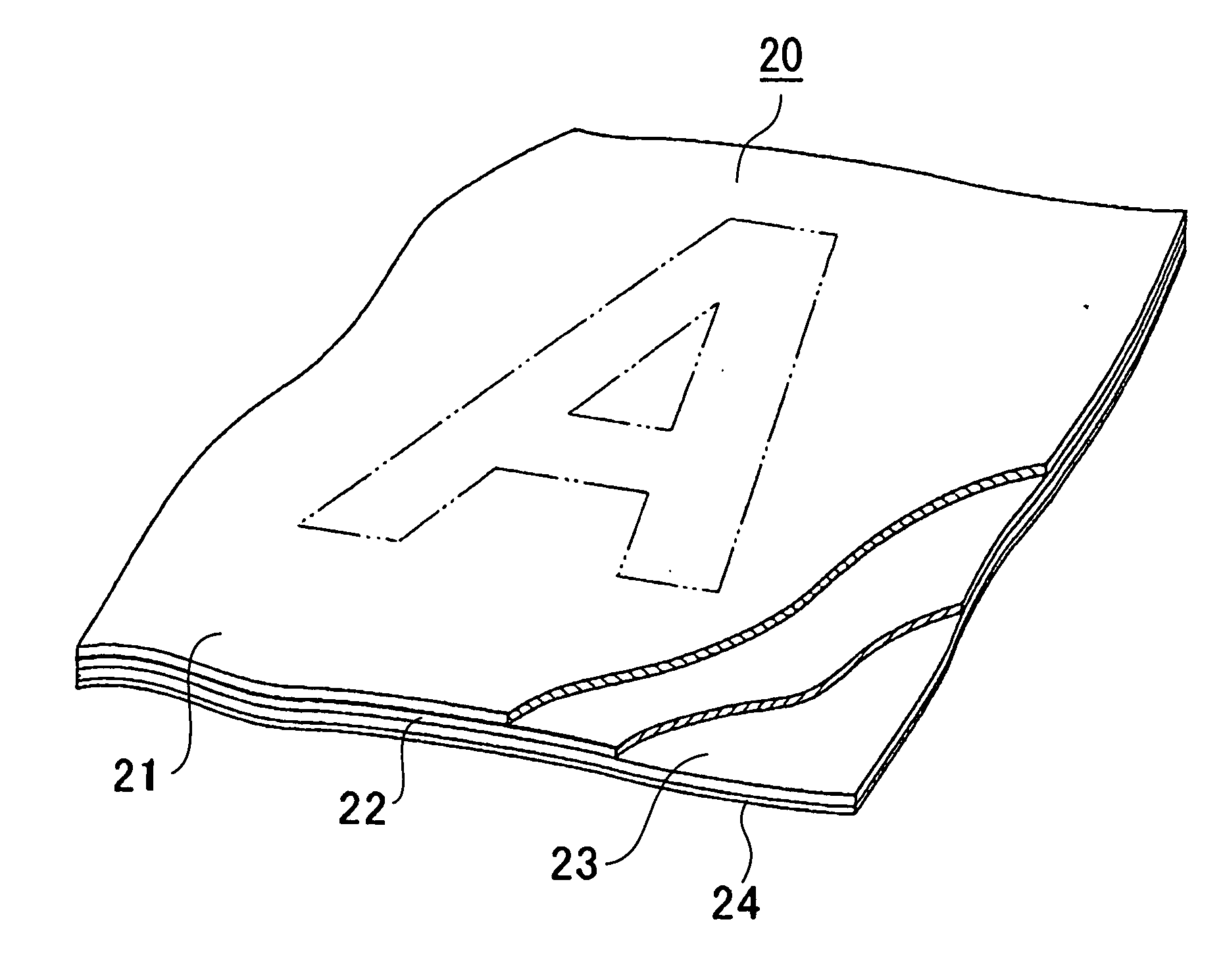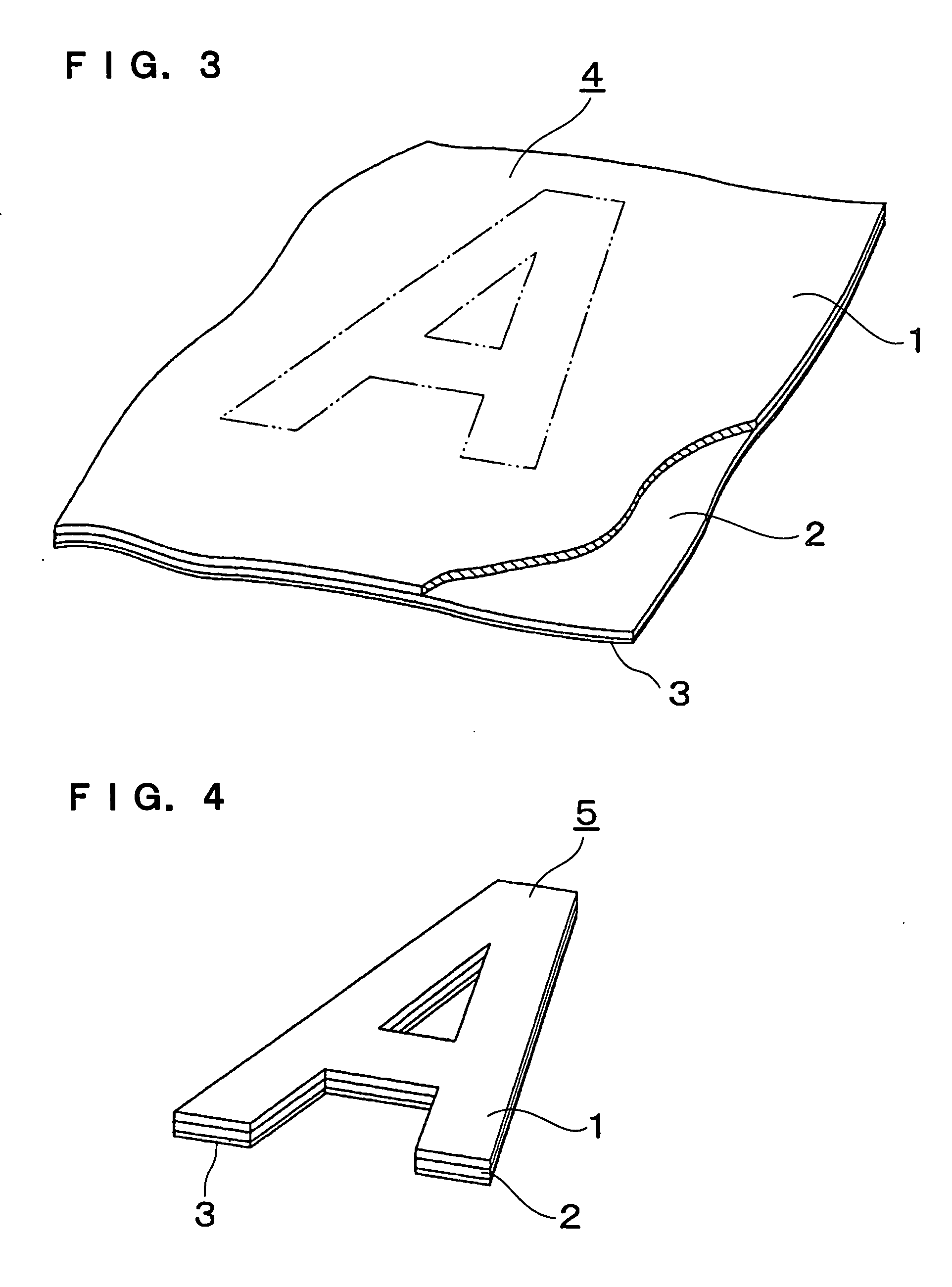Cloth Material for Marking
a cloth material and cloth technology, applied in the field of cloth material for marking or label, can solve the problems of label peeling accident, poor abrasion resistance of labels, failure of transfer printing process, etc., and achieve the effect of preventing the transfer adhesive layer from seeping
- Summary
- Abstract
- Description
- Claims
- Application Information
AI Technical Summary
Benefits of technology
Problems solved by technology
Method used
Image
Examples
embodiment 1
[0043] A cloth material 20 for marking (label making) of the present invention has a structure as shown in FIG. 1. A cloth that forms a label cloth 21 constituting the cloth material for label making 20 of the present invention is made of fibers including a component having affinity for a sublimation dye. Typical examples of the cloth used here include a white cloth such as textile white fabrics, knitted white fabrics, non-woven white fabrics, etc. like polyester fibers.
[0044] The label cloth 21 is used here for transfer-printing various colors, patterns, designs and / or the like onto the cloth by using a sheet of transfer paper printed with a sublimation dye so that the cloth has such transfer-printed colors, patterns, designs and / or the like as a result of the transfer printing of the cloth and sublimation of the sublimation dye used in the printing. The sublimation dye cannot be transferred to the cloth made of other materials such as nylon-base synthetic resins with sharp images...
embodiment 2
[0060] Another embodiment of the cloth material for label making of the present invention is shown in FIG. 7.
[0061] In the drawing, the same parts as in FIG. 1 are provided with the same reference numerals.
[0062] In this embodiment, a heat-resistant film 28 is formed in a lower surface of the intermediate layer 22 (i.e., the surface opposite from the side where the label cloth 21 is disposed). Formed on the surface of this film 28 is the transfer adhesive layer 23, which is made of the hot-melt type thermoplastic synthetic resin by laminating or coating. As the heat-resistant film 28, a synthetic resin sheet that has affinity for the intermediate layer 22 and that has a thickness of, for example, approximately 50 μm may be used. It is necessary that the material of the film 28 be a heat-resistant film sheet, so that there is no concern that the material is deformed or melted in the heating / pressing processes when the colors, patterns and / or designs of the transfer paper are transf...
PUM
| Property | Measurement | Unit |
|---|---|---|
| Melting point | aaaaa | aaaaa |
| Sublimation point | aaaaa | aaaaa |
Abstract
Description
Claims
Application Information
 Login to View More
Login to View More - R&D
- Intellectual Property
- Life Sciences
- Materials
- Tech Scout
- Unparalleled Data Quality
- Higher Quality Content
- 60% Fewer Hallucinations
Browse by: Latest US Patents, China's latest patents, Technical Efficacy Thesaurus, Application Domain, Technology Topic, Popular Technical Reports.
© 2025 PatSnap. All rights reserved.Legal|Privacy policy|Modern Slavery Act Transparency Statement|Sitemap|About US| Contact US: help@patsnap.com



